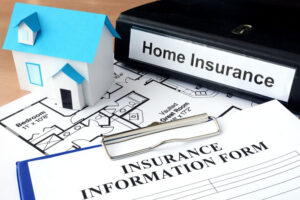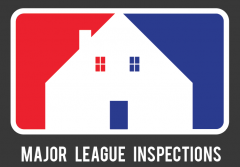
Understanding the Purpose of Home Insurance Inspections
Home insurance inspections serve a crucial purpose for both homeowners and insurance providers. From the insurer’s perspective, these inspections help assess the replacement cost of your home, identify potential risks, and ensure the accuracy of the information provided in your initial policy application. By thoroughly examining the interior and exterior of your property, inspectors can uncover hidden issues or undeclared features that may impact your coverage and premium.
For homeowners, these inspections offer valuable insights into the overall condition of your home, allowing you to address any concerns before they escalate into larger problems. By addressing potential risks proactively, you can not only maintain your insurance coverage but also enhance the safety and longevity of your property.
Navigating the Home Insurance Inspection Process
The home insurance inspection process typically follows a standardized protocol, but it can vary depending on the specific requirements of your insurance provider. In general, you can expect the following steps:
Scheduling the Inspection
Your insurance company will typically contact you to schedule a convenient time for the inspection. Depending on the type of inspection, you may or may not need to be present during the visit.
Exterior Inspection
The inspector will thoroughly examine the exterior of your home, including the roof, siding, windows, doors, and any detached structures like garages or sheds. They’ll assess the condition of these elements and look for potential hazards or risks.
Interior Inspection
If required, the inspector will also conduct an in-depth evaluation of your home’s interior. This may involve inspecting the plumbing, electrical systems, HVAC, and other critical components to ensure they meet safety standards and are functioning properly.
Documentation and Reporting
After the inspection, the inspector will compile a detailed report, including photographs and any recommendations for repairs or improvements. This report is then shared with your insurance company, which will use the findings to determine your coverage and premium.
Preparing for a Home Insurance Inspection
To ensure a smooth and successful home insurance inspection, it’s essential to prepare your property in advance. Here are some key steps to take:
Gather Relevant Documentation
Collect any documentation that can support the value and condition of your home, such as receipts for recent renovations, maintenance records, and warranties for major appliances or systems.
Conduct a Self-Inspection
Walk through your home, both inside and out, and make note of any potential issues or areas of concern. Address these proactively to demonstrate your commitment to maintaining your property.
Address Known Concerns
If you’re aware of any existing problems, such as a leaky roof or outdated electrical wiring, make sure to have them addressed before the inspection. This shows your insurance provider that you’re taking an active role in mitigating risks.
Ensure Access and Availability
If the inspection requires interior access, make sure you or a designated representative will be available to grant the inspector entry. Clear any obstructions or clutter to facilitate a thorough evaluation.
Navigating the Aftermath of a Home Insurance Inspection
The outcome of a home insurance inspection can have significant implications for your coverage and premiums. Understanding how to interpret the results and respond effectively is crucial.
Understanding the Inspection Report
Carefully review the inspection report, paying close attention to any identified issues or risks. Familiarize yourself with the inspector’s recommendations and the potential impact on your insurance policy.
Addressing Identified Concerns
If the inspection reveals problems that need to be addressed, work diligently to complete the necessary repairs or modifications within the specified timeframe. This demonstrates your commitment to maintaining your property and can help avoid potential coverage issues or premium increases.
Negotiating with Your Insurance Provider
In some cases, you may disagree with the inspector’s findings or the insurance company’s interpretation of the results. Don’t hesitate to engage in constructive dialogue with your provider, presenting evidence and advocating for a fair outcome.
Exploring Alternative Coverage Options
If your home is deemed uninsurable or your premiums become unaffordable due to the inspection results, explore alternative coverage options, such as surplus lines carriers or state-sponsored insurance programs. Seek the guidance of an experienced insurance agent to navigate these alternatives.
Leveraging Home Inspections for Successful Claims
The insights gained from a home insurance inspection can be invaluable when it comes to filing successful claims. By understanding the inspection process and proactively addressing any identified issues, you can position yourself for a more favorable outcome in the event of a covered loss.
Documenting Pre-Existing Conditions
Maintain detailed records of the home’s condition, including any repairs or upgrades, as documented during the insurance inspection. This can serve as crucial evidence if a claim is disputed or if the insurance company tries to attribute damage to pre-existing conditions.
Facilitating the Claims Process
Cooperate fully with the insurance company’s claims adjusters and provide them with the necessary documentation, including the inspection report and any relevant photographs or receipts. This demonstrates your transparency and willingness to support the claims process.
Advocating for Fair Settlements
If the insurance company’s proposed settlement falls short of the actual repair or replacement costs, don’t hesitate to negotiate. Leverage the information gathered during the inspection to advocate for a fair and comprehensive settlement that covers the full extent of the damages.
Navigating Challenging Scenarios
While most home insurance inspections proceed without major complications, there are instances where homeowners may face more complex situations. Understanding how to navigate these challenges can help you protect your interests and ensure a favorable outcome.
Dealing with Denied or Canceled Policies
If your home insurance policy is denied or canceled due to the results of an inspection, don’t despair. Engage with your insurance provider to understand the specific reasons and explore options for remediation, such as making the necessary repairs or seeking alternative coverage.
Handling Disputes and Disagreements
In some cases, you may disagree with the inspector’s findings or the insurance company’s interpretation of the results. In such situations, it’s crucial to document your concerns, gather supporting evidence, and engage in constructive dialogue with your provider to reach a mutually acceptable resolution.
Preparing for Reinspections
If you’ve made significant repairs or improvements to your home following an initial inspection, you may need to undergo a reinspection. Approach this process proactively, ensuring that all the necessary work has been completed and that you have the documentation to demonstrate the improvements.
Leveraging Home Inspections for Ongoing Maintenance
While home insurance inspections are primarily focused on assessing risk and determining coverage, they can also serve as valuable tools for ongoing property maintenance and improvement. By addressing the insights and recommendations provided by the inspector, you can enhance the safety, longevity, and overall value of your home.
Identifying Maintenance Priorities
The inspection report can help you identify areas of your home that require immediate attention or regular upkeep. Use this information to create a comprehensive maintenance plan and allocate resources accordingly.
Implementing Recommended Upgrades
The inspector may suggest specific improvements, such as upgrading the electrical system or installing a new roof, to improve the overall condition and safety of your home. Prioritize these recommendations and consider them as part of your long-term investment strategy.
Maximizing Insurance Discounts
Some home features, such as security systems or fire-resistant materials, may qualify you for discounts on your insurance premiums. By addressing the inspector’s findings and implementing these upgrades, you can potentially save money on your insurance costs while enhancing the protection of your property.
Home insurance inspections are a critical component of the coverage and claims process, providing valuable insights that can significantly impact your financial security and the long-term well-being of your property. By understanding the purpose of these inspections, preparing thoroughly, and leveraging the information they provide, you can navigate the complexities of home insurance with confidence and ensure that your property is adequately protected.
Contact Us (954-909-1255) For a Free Consultation!
—
 About Major League Inspections
About Major League Inspections
Our home inspections involve thorough evaluations of residential properties to identify any issues, ensuring that buyers and sellers are well-informed about the property’s condition. Our commercial inspections focus on assessing the structural integrity, safety features, and compliance of commercial properties with building codes and regulations. Both types of inspections are crucial for promoting safety and informed decision-making. Our environmental inspection services address damage caused by water, fire, mold, and other disasters. When you experience environmental damage, it’s crucial to conduct a thorough inspection first to identify any hidden issues that could lead to problems in the future and help a restoration team properly restore your property.
> Learn More
